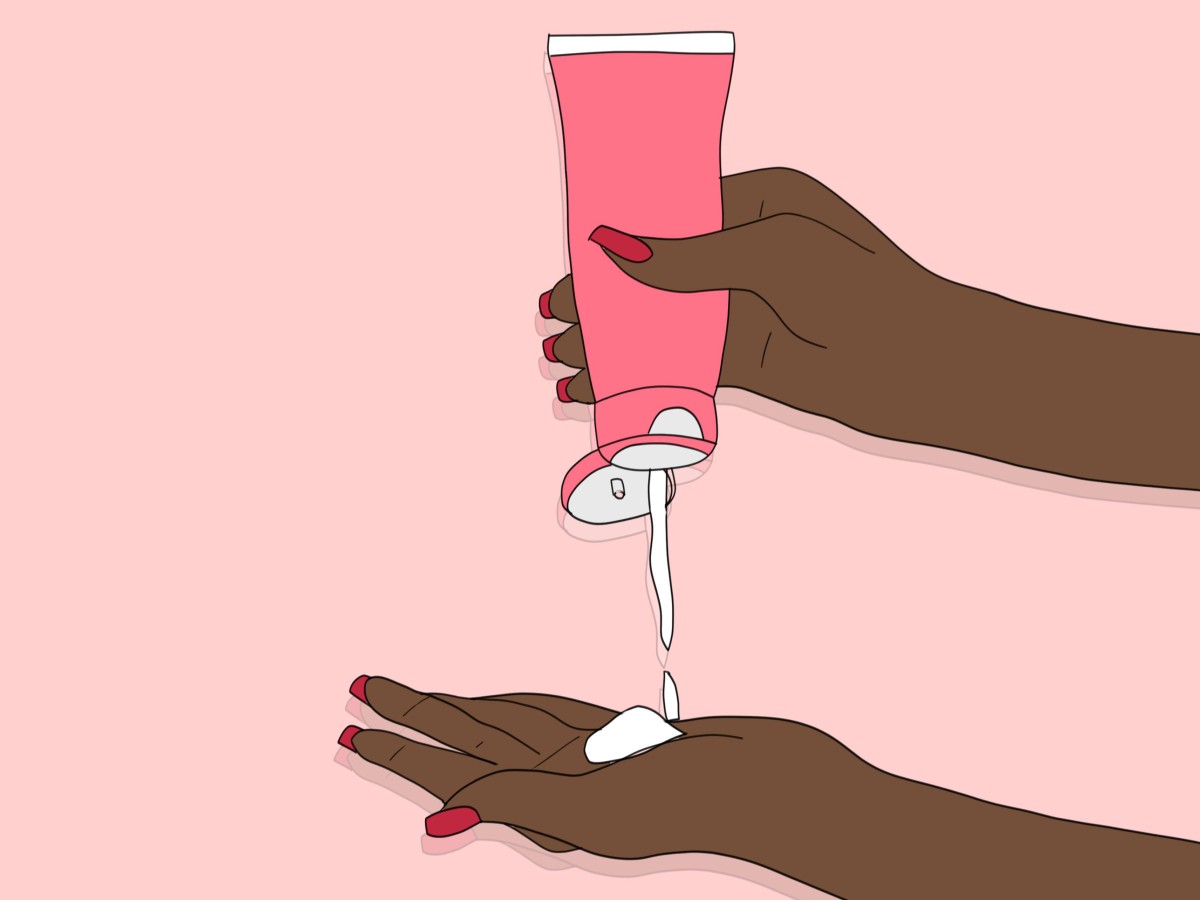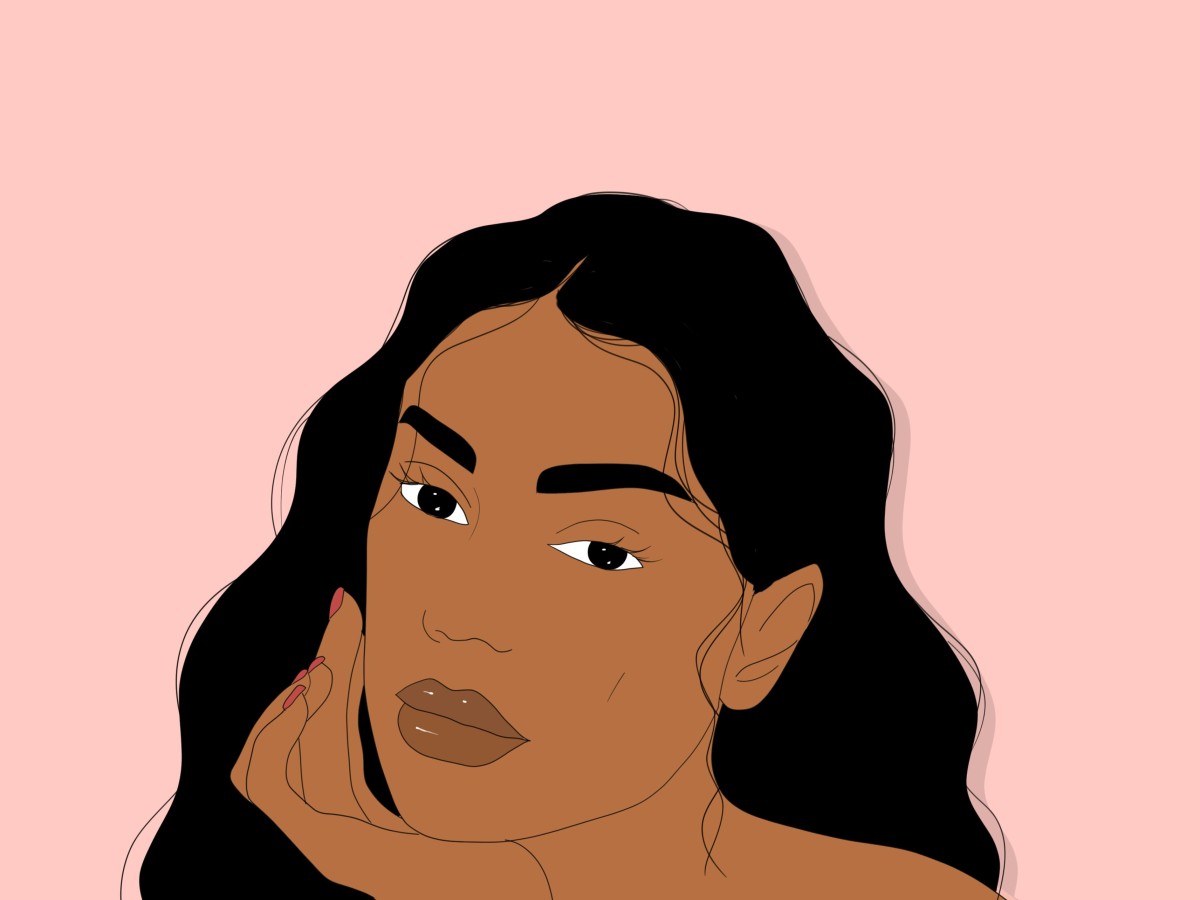Asian beauty trends are defining the new makeup paragon. The days of striving for a signature Kardashian-approved look are over. Matte lipstick, striking contour and full-coverage foundation feels like a distant memory. There’s a new standard of makeup in town and it promotes a natural look. The ‘clean girl’ aesthetic is dominating red carpets, advertising and retail sales. It promotes a healthy complexion and focuses on skincare and makeup to achieve the best results. Many of the ingredients, products and techniques used to perfect this look originate from the Asian beauty market.
What is the ‘clean girl makeup’ trend?
The clean makeup trend screams less is more. It’s perfect for all budgets, for makeup professionals and beginners alike. The trend originates from XO Lizah’s viral TikTok video. The emphasis for this aesthetic is simple products like concealer, lip gloss and moisturiser. The aim is to promote a healthy glowing appearance with minimal products and less effort. The trend has made me fall in love with makeup all over again and it’s a far cry from the heavy matte makeup look that was popular just a few years ago.
The first standard of makeup I was introduced to dominated the late 90s/early 2000s scene. Everyone strived for nude lips, thin eyebrows, smokey eyes, and matte face, contoured with bronzer. While there has been a recent resurgence in some 90s and 2000s makeup trends on TikTok and YouTube, makeup values and techniques have changed significantly since then. The industry is more customer-driven than ever before. We’re taking what we want and discarding the rest.
Makeup and cosmetic surgeries are intertwined businesses
The cosmetic surgery business and beauty sales often reflect each other like a mirror. From breast augmentations to facelifts, the overall popularity of cosmetic surgeries is decreasing. At the same time, this has coincided with the rise in ‘tweakments’. Tweakments promise non-invasive surgical and cosmetic treatments to enhance one’s appearance rather than dramatically alter your looks. When done right, they’re the type of treatment that leaves you wondering if a friend is wearing really flattering makeup instead of having undergone a cosmetic procedure. Did she or didn’t she? What are her makeup secrets and why does she look 10 years younger?
Consequently, makeup artists credit the Asian beauty market with the increased interest in tweakments and their effect on makeup sales.
What’s the difference between Asian and western beauty trends?
You can associate words like ‘bold’, ‘striking’ and ‘sultry’ with western beauty tips and tricks. The Asian beauty standard demands that beauty looks effortless and natural. It’s ‘soft’, ‘sweet’ and ‘natural’ by comparison. A significant difference between Asian beauty and western beauty is that Asian beauty is often applied in smaller amounts and is more focused on enhancing your features rather than trying to change them. Products like skin tints, wispy eyelashes, lip stains, blush, glowy eyeshadow and eye glitter are popular choices around Asia. The point is to seek an effortless makeup look with dewy skin, a soft blush, fluffy eyelashes and a lip colour that seems pretty and natural.
While western beauty trends are diverse, Asian beauty trends prove to be some of the most innovative on the market year after year.
Western brands like Fenty Beauty, Patrick Ta and Pat McGrath are increasingly taking inspiration from Asian beauty trends. After the Chinese ‘douyin’ makeup trend took off across TikTok, the sales of pink, nude and brown makeup palettes increased. Western brands began to offer options that would fulfil these trends with rose gold-themed palettes. Products directly inspired by this newfound popularity in Asia. The ‘douyin’ trend has been popularised by singers, actors and models from Asia, promising a sweet and innocent makeup look.
Asian beauty trends are dominating social media
Its influence has reached across Asia, particularly to South Korea and Taiwan. Asian brands such as Peripera, Rom&nd and 3CE have seen an increase in international demand. Asian brands have become more accessible recently to meet demand in the UK, US and Canada. Through retailers like Cheripai, Peach & Lily, Sephora and Selfridges which sells Japanese, Chinese and Korean products. However, it’s not just East Asia that has seen a popularity boost from online trends. The ‘glass makeup’ trend is becoming popular in countries like Indonesia, India and the Middle East region too.
What’s so special about Asian beauty?

The Asian beauty world has been instrumental in promoting the self-care movement. Videos that demonstrate a focus on health in skincare as well as self-acceptance in trends like ‘get unready with me’ videos have seen massive success on YouTube. The rise of the ‘Korean 10-step skincare‘ routine has helped to further push sales and challenges online.
There’s an obvious difference in the way Asian beauty influencers demonstrate their beauty routines online vs. western influencers. Asian influencers often focus on their skincare, makeup and hair care routine in a single video. This allows them to demonstrate the work and patience that goes into maintaining healthy skin and hair. Skincare and makeup are heavily intertwined in Asian cultures.
This has contributed to the success of newer brands like Glossier. Their famous motto ‘first skin, makeup second’ not only allows Glossier to tap into the market of both skincare and makeup, but it helps to distinguish the brand from others. In various forms, we see the popular ‘glass skin’ trend from South Korea trickle into western brands. Take ‘Futuredew’ for example. It’s a serum from Glossier that promises a healthy glowing complexion in just one step. Trends like this have been a life-saver for people with oily skin like myself. Because, instead of constantly trying to hide the oiliness, these products have helped me to embrace the skin that I have and not shy away from my skin’s natural shine.
In Asian beauty trends, we see a constant influx of interesting new ingredients in skincare and makeup products. Hence ingredients like snail mucin, fermented rice water, green tea, turmeric powder, amla oil, ginseng, argan oil and bee propolis are major selling points to Gen Z/Y.
Preventative skincare
Undoubtedly one of my favourite aspects of Asian skincare is the respect given to preventative measures in beauty.
There’s a growing awareness of the need for SPF in your daily routine. I didn’t know until recently that the lack of SPF in my skincare routine was exacerbating my acne scars. They have healed significantly since I incorporated SPF products into my routine. Asian beauty trends are not just trends for TikTok, they actually work.
I was taught skincare tips as a child that I look back on and cringe at. Gone are the days when the only advice teens with oily skin would receive was to wash their face obsessively and avoid moisturisers. I didn’t realise for a long time that this advice always makes oily skin produce more sebum. That people with oily skin should be using moisturisers as much as people with dry skin. Or the problem gets worse. In the early 2000s, adverts directed at teens for skincare were limited to astringent, skin-stripping formulas like those from Neutrogena. I also remember being told to take care of my skin once it had already become an issue. In Asia, it’s much more normalised for parents to introduce their children to a skincare routine early on before they encounter hormonal acne.
How Asian beauty trends are passed down
Family trips to a ‘Jjimjilbang’, or bath house in South Korea, are a part of Asian culture that can help to slash future skincare issues in half. In the west, there is a rarely addressed myth in POC households where some children are taught that melanin protects them from the need to use sunscreen. That we don’t need it at all because we’re naturally protected, which couldn’t be further from the truth. Addressing skincare protection early is something I hope continues to reach more homes in western countries.
The fact that caring about your skin from a young age is normalised in various Asian cultures is something I hope grows in the West. You can tell so much about health from the skin. After all, it’s the biggest organ on the human body.
Luxurious and targeted ingredients
I’ve become accustomed to finding new products to try on popular social media apps like Instagram, TikTok and Youtube. Asian beauty trends have introduced the western market to luxurious ingredients and brands. They’re both fun to use and actually helpful additions to our existing routines. Now a lot of these products and brands from Asia can be accessed easily from retailers like Holland and Barrett, Boots and even Amazon.
Men are becoming increasingly aware of options directed at them. Particularly in the Middle East, India, China and South Korea. Beard oils, shaving creams and more targeted skincare are becoming more easily accessible for men to find and the stigma about caring for your skin, hair and nails is thankfully diminishing. Korean and Chinese men spend the most money on skincare on average in comparison to men around the world and I think the normalisation of men’s skincare will continue to grow.
The beauty industry is ever-changing and always exciting. What people did a year ago can seem outdated at a moment’s notice, like the now money-piece hair trend. Even trends I thought would certainly remain popular, like the natural hair movement, have drastically changed. But I’m not worried about the decline of Asian beauty trends anytime soon since it’s such an easy trend to get involved in.
Enhancing your natural beauty
Why is the natural beauty trend so popular? Firstly, it’s more accessible than previous trends. Trends that encouraged the use of expensive products often made people feel the need to alter their appearance drastically. You don’t require special high-end brands to get involved with the natural ‘clean girl aesthetic’. It encourages you to look at what features you have naturally. Enhance them rather than change them. And learn to love the real you a little bit more. You don’t have to look like a different person to rock this look.
Simple makeup tricks to lessen the appearance of dark circles or enhance your eye shape are helping women to embrace their unique features. The ‘clean girl’ makeup trend is an evolution of the ‘no-makeup-makeup’ look. The effortless makeup look promises to enhance the beauty of every person who tries it for a cheaper price. I hope that the genius Asian beauty trends that have dominated social media will be here to stay.
Find more beauty articles here >
Written by Chanté-Marie Young
Illustrated by Francesca Mariama

